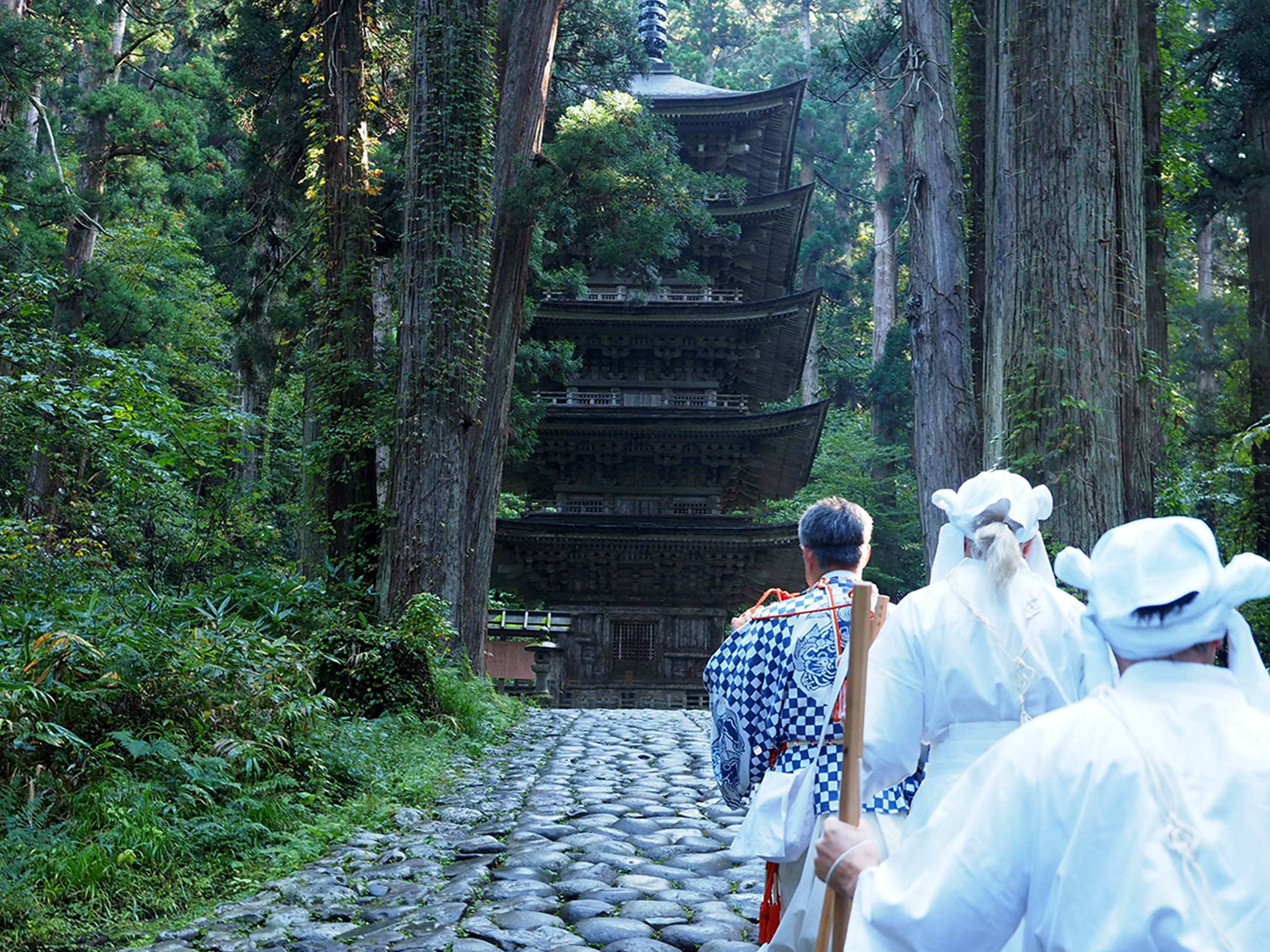
Walk with YamabushiJourney to Rebirth: Dewa Sanzan

Walk with YamabushiJourney to Rebirth: Dewa Sanzan


In the middle of Yamagata Prefecture, present-day Tsuruoka City roughly corresponds to ancient Dewa Province. Known as Dewa Sanzan, three peaks clustered here, for more than 1,400 years, have been held sacred. To carry out ascetic practices that increase personal spiritual power, people visit the mountains from the local Shōnai region, from throughout Japan, and from overseas.
The lowest mountain, Haguro (414 m) improves present wellbeing. On Gassan (1,984 m), adherents exert themselves to atone for past misdeeds, and to comfort departed souls and pray for their rebirth. Practices on Yudono (1,504m) focus on rebirth into a new life. Pilgrims come to Dewa Sanzan to undergo symbolic death and rebirth.
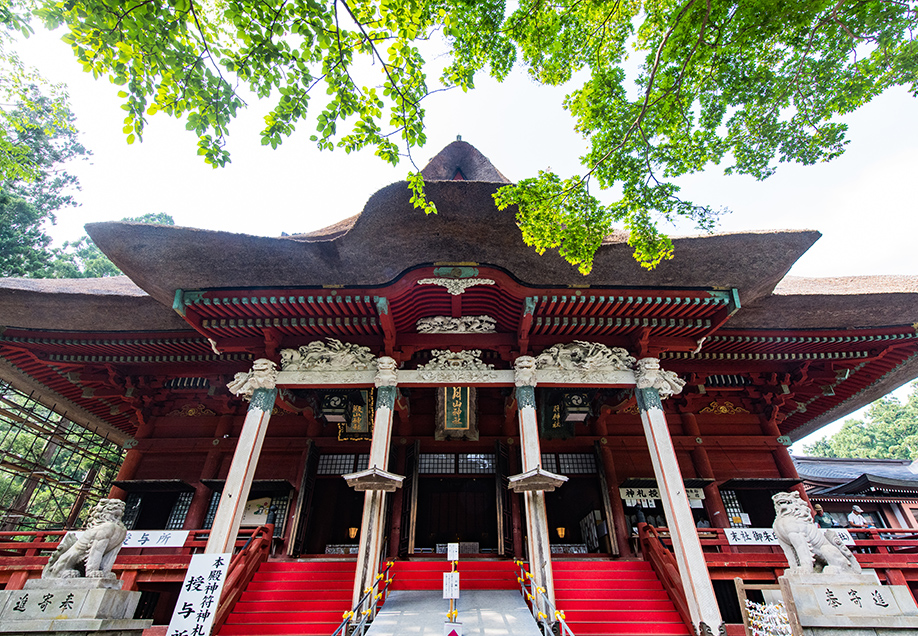
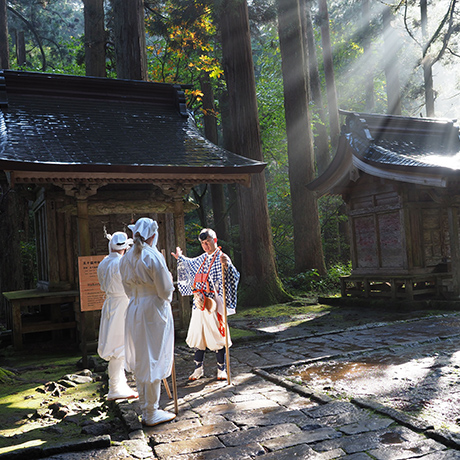
Yamabushi are practitioners of Shugendō, a body of religious beliefs and practices first consolidated during the 7th century. Incorporating Buddhist and tantric elements, Shugendō evolved based on animistic mountain worship and folk rites. Mountains themselves are seen as gods or Buddha, and the characters ‘yama’ and ‘bushi’ literally mean ‘mountain’ and ‘on all fours’ (as in prayerful prostration). Traveling around on mountains, yamabushi worship trees, rocks, and other natural objects in which spiritual power dwells. Through ascetic practices that include physical exertion and challenging ordeals, such as exposure to cold waterfalls, yamabushi seek to draw out latent human abilities and increase their spiritual power.
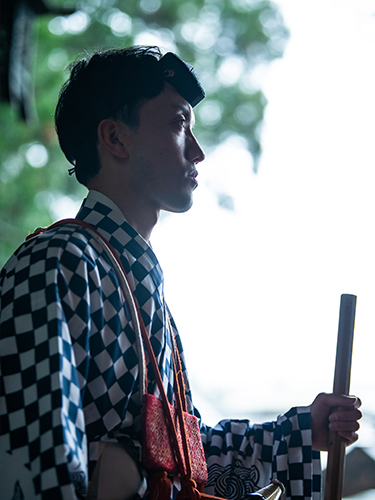
Over 1,400 years ago in 593, legend has it that Prince Hachiko son of Emperor Sushun arrived to devote the rest of his life to ascetic practice on the mountains. This established Dewa Sanzan as a spiritual center. En no Ozunu, held to be the founder of Shugendō, is also said to have trained on these three mountains.
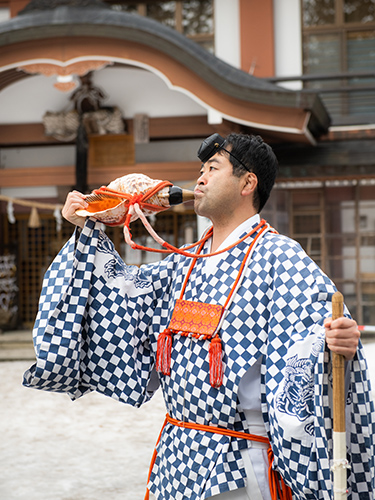
Some shrines and temples provide shukubō lodgings for pilgrims. During the Edo period (1603–1867), when pilgrimage was at its peak, there were as many as 330 shukubō to accommodate pilgrims coming to Dewa Sanzan,.
In the Haguro area, today there are 27 shukubō and ryokan. Some shukubō also accept non-religious guests.
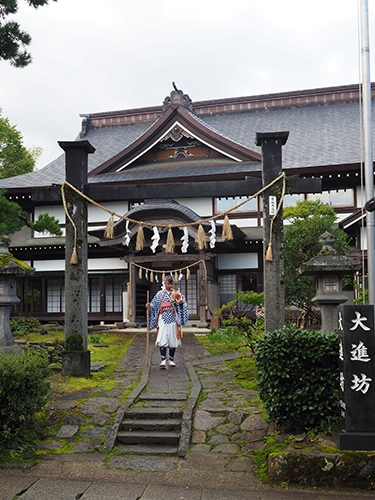

Yoshizumi-san of Dewa Sanzan Shrine was born and raised in a family that has been running a pilgrim lodge for generations. He is also a yamabushi and has extensive knowledge about Dewa Sanzan yamabushi.
On Haguro and elsewhere, tengu are associated with mountains and mountain beliefs. Tengu, with their ability to fly among trees and freely manipulate the powers they possess, personify the goals of yamabushi. You could say a tengu is what a yamabushi aspires to become.
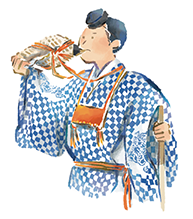
Practitioners of Haguro Shugendō associate Mt. Haguro with the present, Mt. Gassan with the past, and Mt. Yudono with the future. Appropriate to rebirth as a new soul while living, as they climb the three peaks in the Sankan Sando traverse, pilgrims wear white. On top, a Haguro yamabushi might wear a checkered garment called surigoromo [rubbing garment]. To better absorb natural energy from the mountain, the wearer rubs this outer layer on objects such as rocks and trees.
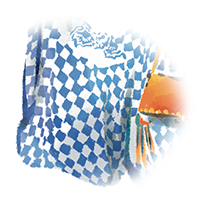
During their exertions on the mountain, yamabushi abstain from meat and fish and eat simple shōjin ryōri style food. A typical meal is a bowl of soup and one other vegetarian dish.
On Mt. Haguro, we consume devotional food with the intention of receiving spirit from the mountain. While it is possible to get all the protein the body needs, food foraged from the mountains is not what you would call luxurious. When they are not training, yamabushi eat whatever they like.
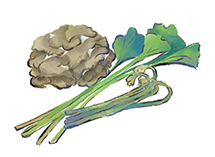
It was originally used for signaling by yamabushi who carried out their activities alone on the mountain. For example, depending on how the shell was blown, one might warn others of imminent danger or summon yamabushi to a gathering. Gradually, the conch came to be used for exorcism and to ward off evil.
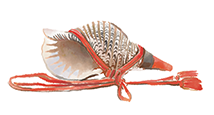
People with no prior training can start on the way to becoming a yamabushi in the Autumn Peak Pilgrimage. Participation is limited to men of good health whose families also consent. Documents must also be submitted. If there are more applicants than available places, final selection will be made by oracle in front of the altar or by lottery. Non-Japanese applicants may also be accepted.
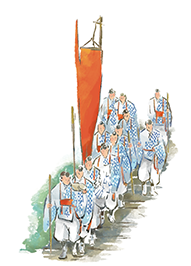
I am not allowed to disclose the details. I can say that it is a type of reincarnation training. After a death ceremony, that is, funerary rites, you enter the ‘womb’ of the mountain and undertake rigors to achieve rebirth. By pushing yourself to physical and mental extremes, all your senses become sharpened. Perhaps the greatest benefit of this training is to make you more greatly appreciate things you had formerly taken for granted in everyday life.
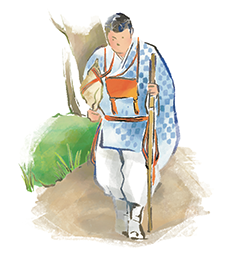
Non-Japanese applicants may also be accepted. In the past, the mountain was not open to women. Times have changed and Miko Shugyō woman-only yamabushi training is available during the same period as the Autumn Peak Pilgrimage. Women withdraw to a hall on the mountain and undertake ascetic rigors. Non-Japanese applicants may also be accepted.
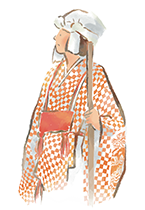
When in training, interaction is not welcomed. During training, however, a yamabushi is not likely to be in a place where lay people normally venture. Since preaching is also part of training, if you encounter a yamabushi, please feel free to talk to them. You will find, however, that few are talkative.
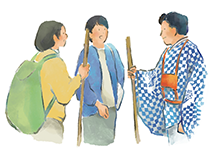

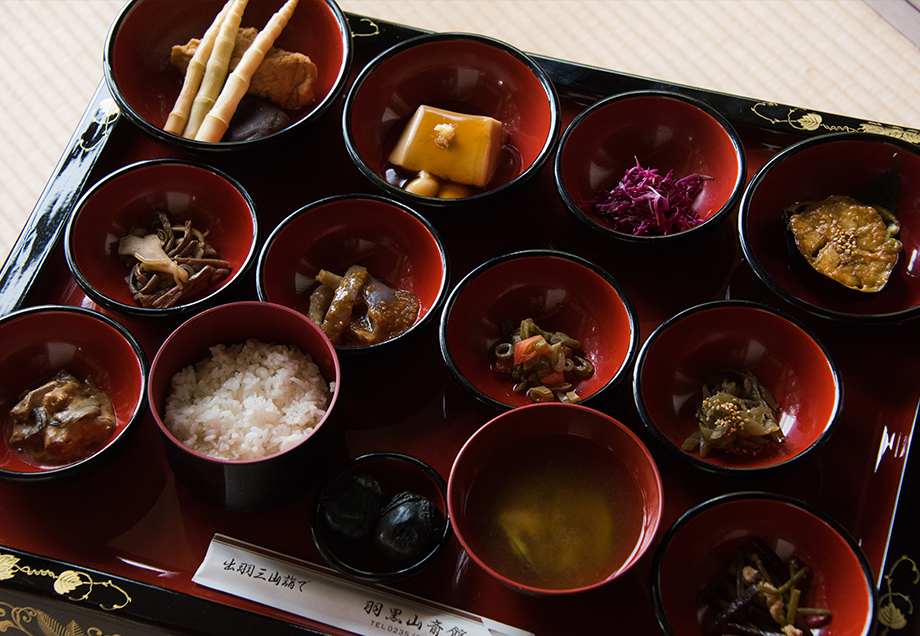
More information about vegetarian cuisine in Tsuruoka available.
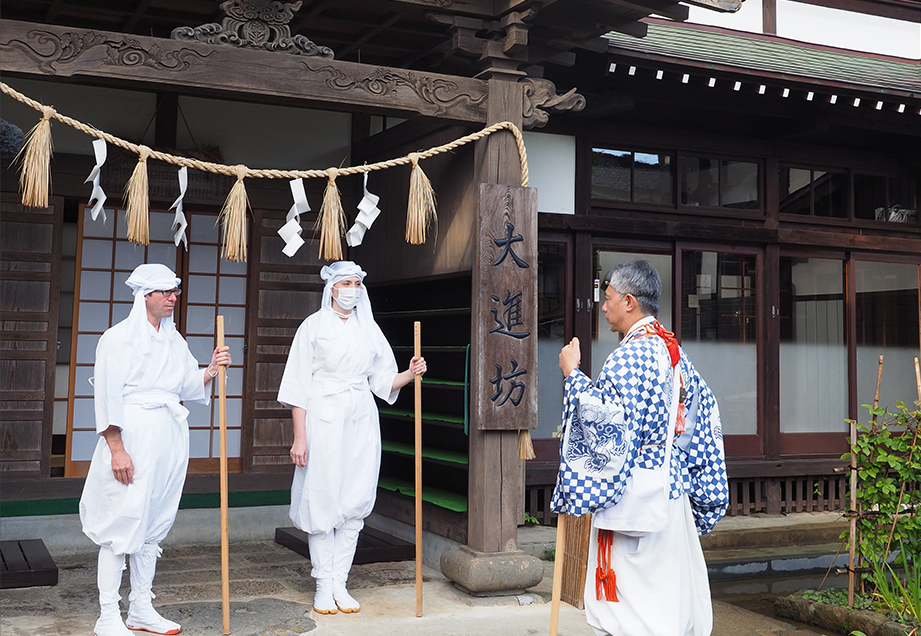
More information about Pilgrim Lodgings in the Haguro area available.